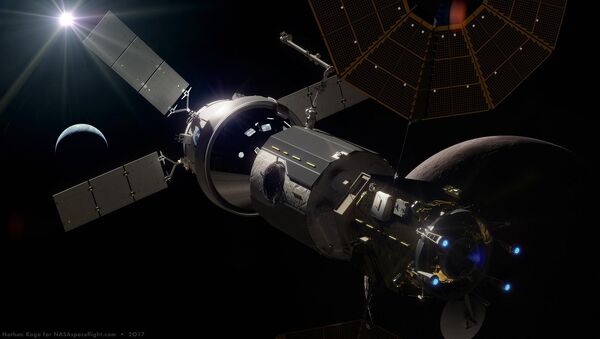The ESA Director of Human and Robotic Exploration, David Parker, told a space conference in Newport, Wales, earlier this week that a timeline for sending the first Europeans to the surface of the Earth's only natural satellite will be scheduled by the end of this year, The Daily Mail Reported.
According to Parker, cited by UK-based media, plans for a European mission are in motion.
"We want to go to the Moon in partnership with NASA [...] The first elements of the gateway are already under contract. Multiple studies are underway for a human exploration lander. We have the plan in front of ministers. If they make the right decisions we will hopefully get the first Europeans on the Moon [...] Europe can punch above its weight on a global scale", Parker, a former head of the UK Space Agency, told the conference, cited by The Daily Mail.
Parker stressed that landing on the Moon and constructing a base in orbit will be a vital step in a longer-term vision of landing humans on Mars, according to the media report.
"Building a rocket to go to Mars is the least difficult bit [...] It's how to support humans, how physically you protect them from radiation [...] So the Moon is a great place to prepare for deep space", Parker said, cited by the media outlet.
According to The Daily Mail, the ESA-contributing states will send representative ministers to Seville, Spain, on 26 November, where it is hoped that final funding approval for the mission will be granted.
Notably, the UK will remain a participant in the European Space Agency, even in the event of the country's departure from the EU this October, The Daily Mail said.
As part of its new lunar program, the US National Aeronautics and Space Administration (NASA) is developing a Lunar Orbital Platform dubbed the 'Gateway', from which spacecraft can shuttle to the moon’s surface. NASA emphasizes that 'Gateway' is an international project and will be implemented with the involvement of commercial companies.
The Gateway offers the prospect of refueling and modifying spacecraft for the six-month trip to Mars without having to first escape Earth’s gravity, according to NASA. The lunar orbital station would also allow a quick succession of multiple manned and unmanned lunar landers, which would be needed in conjunction with a permanent human presence on the Moon.
Earlier, Russian Space Agency Roscosmos chief Dimitry Rogozin said that Moscow was ready to participate in the project on an equal footing with the United States. He also noted that Moscow had questions for Washington about the program’s format, including its time frame and architecture.

